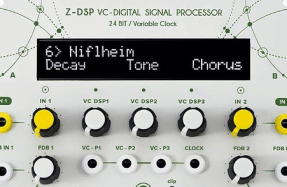Diatonic chord substitution
Oct 22, 2019
4 minutes
By Dave Clews
If you’ve ever wanted a phrase perfect for impressing people, you’d have to go pretty far to beat ‘diatonic chord substitution.’ In reality though, it’s not that tricky a concept to get around, so let’s break it down into its constituent parts to figure it out.
In a musical sense, the term ‘diatonic’ means ‘belonging to,’ so we’re dealing with chords made up of notes that belong to the parent scale of the key we’re working in. For a lot of musical styles, the diatonic system is a great way to organise melodies and harmonies into patterns that are pleasing to the ear, but with such a limited palette of chords
You’re reading a preview, subscribe to read more.
Start your free 30 days



